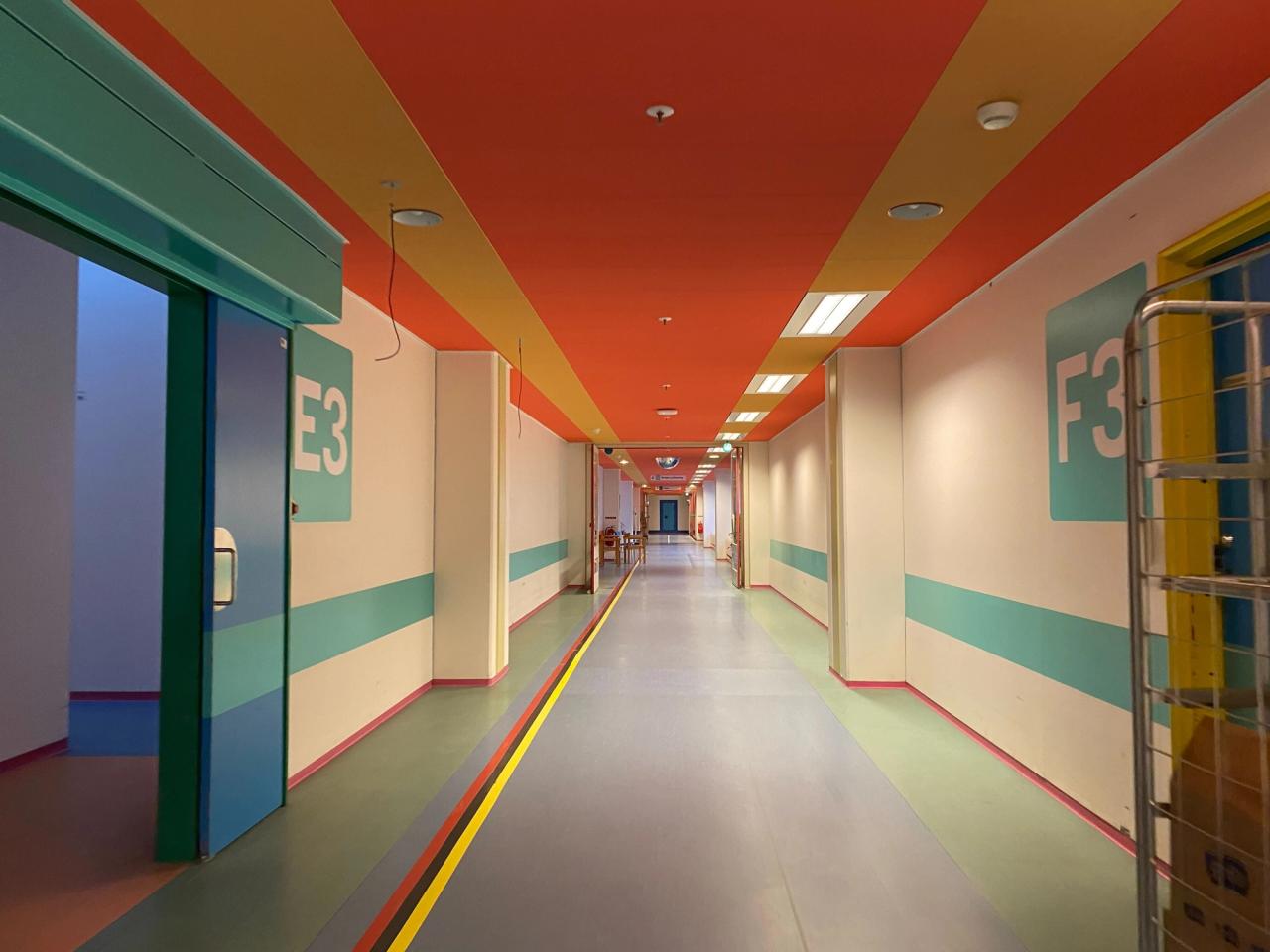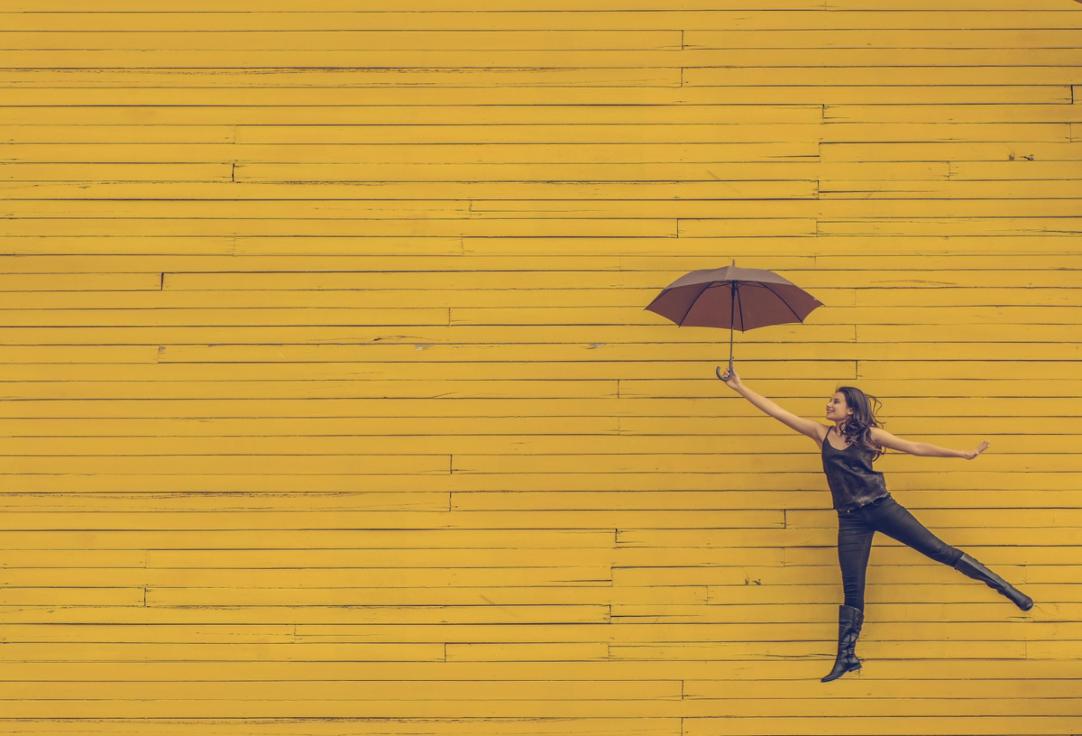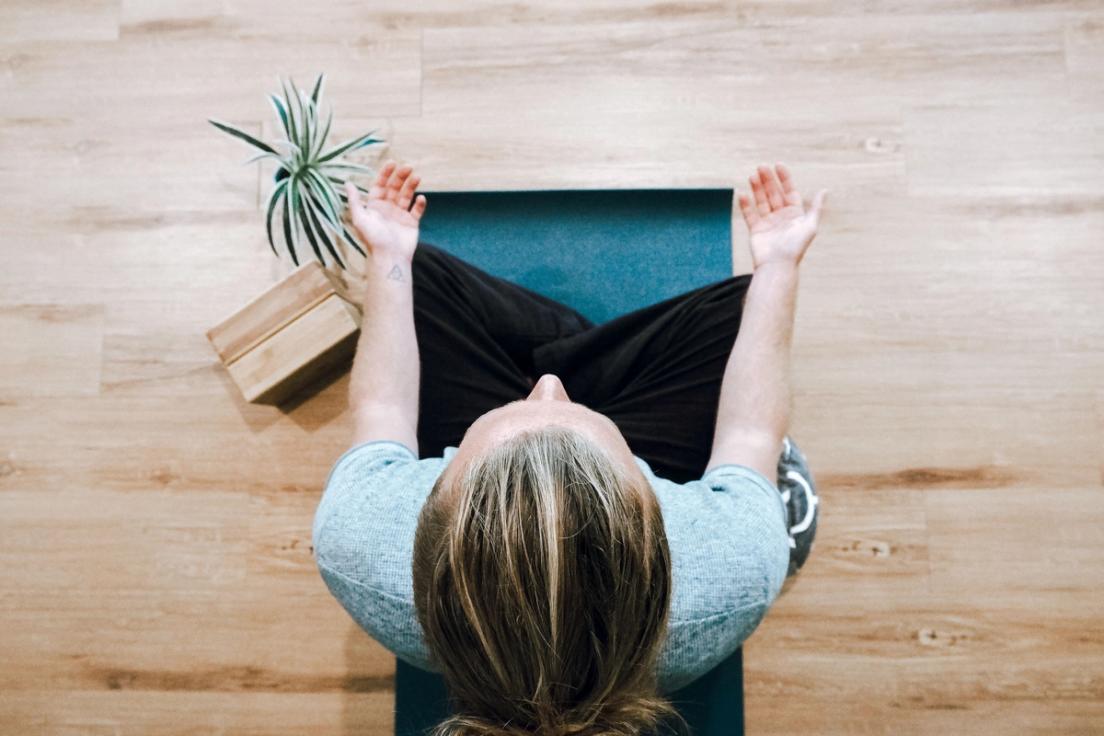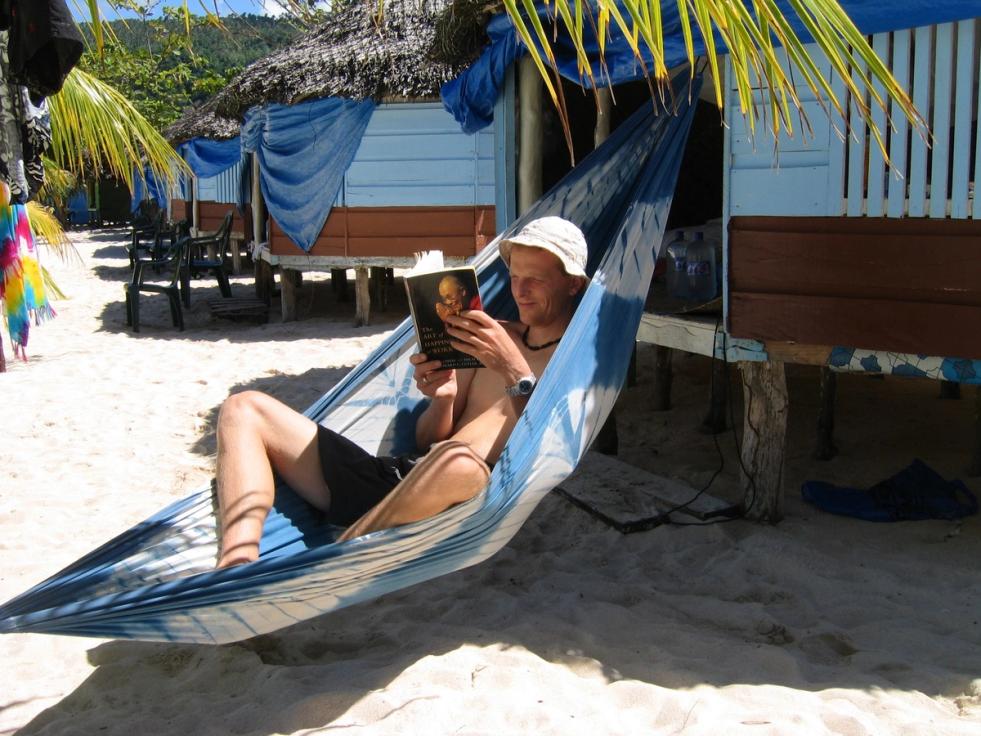A few years ago I spent some time at the Danish Hospital Herlev. I was, unfortunately, hit by a blood clot in my spine, which gave me a spinal cord injury and left me (at the time of my hospitalization) in a wheelchair, unable to walk and feel pain, temperature and stretch in the main parts of my body from the stomach and down.
To this day, I still do not feel any pain, temperature and stretch from my stomach and down in the right side of my body (and parts of my left), and I still struggle to "get hold" of my legs when I wake up in the morning or have been sitting for a long time. But hey - I'm walking and even sometimes running a bit now! By the use of my brain and will!
In this article I am sharing my story of recovery, to inspire and bring hope to those of you who might go through pain or any other psychological or physical struggle at the moment. Let me start by telling you a bit about the Hospital, where my initial healing journey started.
Herlev Hospital
Herlev hospital isn’t just any ordinary hospital. The art at Herlev hospital was designed by the Danish artist Poul Gernes. And when I say art, I mean everything functional has been made into a piece of art - from the door handles, to the elevators, to the closets. The curtains are colorful with floral patterns - and the intricate design in every little detail is amazing. The curves, the symmetry, the colors - everything spoke to a part of my brain which stimulated happiness and joy. Several people jokingly asked me during my stay: “Did they give you some funny pills?” because I enthusiastically sent them pictures of the place I found myself in.
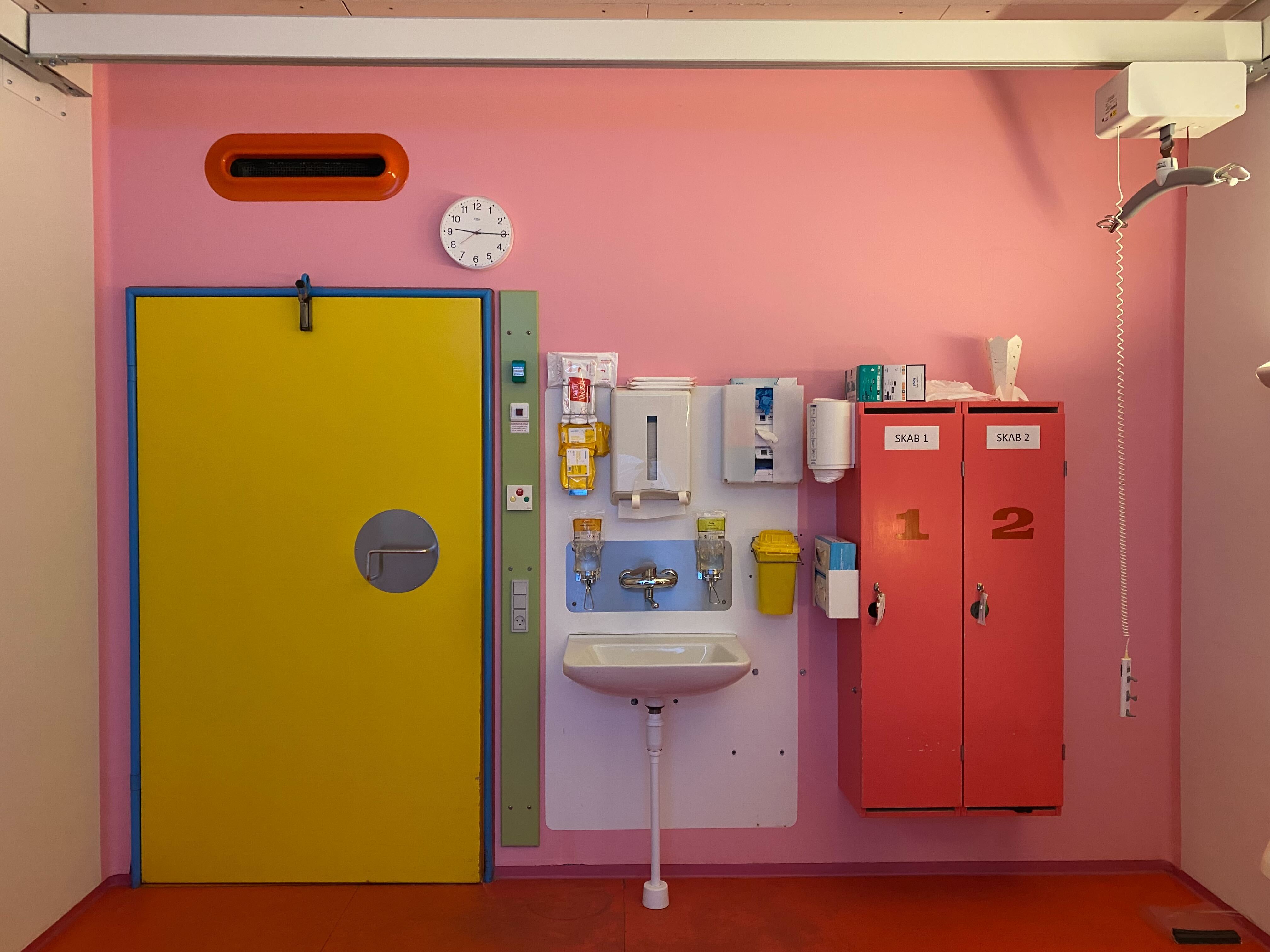
But honestly, look at this place - isn’t it beautiful? When you lie in the hospital bed and look towards the door, you see a closet with the coolest design of a number on it, and a brightly vibrant door - which makes you smile. When you look out the window, you see a colorful curtain with flowers. When you go to the bathroom you see a bright green toilet holder and yellow beautifully formed hangers.
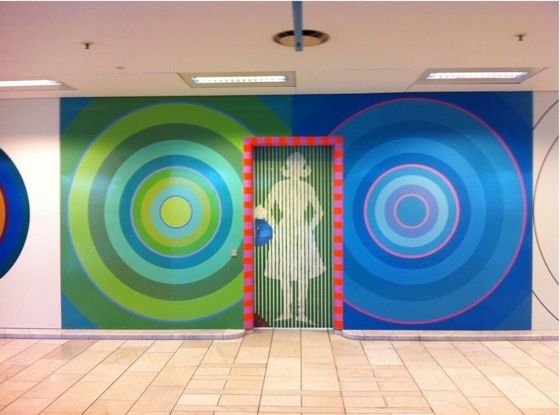
The colors and the art hit my nervous system in just the right way and worked wonders for me. This whole experience led me to investigate the history of the art and the art at this particular hospital in more detail, as well as what other factors played a role in my healing journey. In this article, I am sharing my findings with you.
Healing Art and the Art of Healing: Making the Connection
In 1976 Herlev was constructed, with its artwork designed by Poul Gernes. It was one of the first polychrome hospitals in the world. Gernes was originally commissioned to paint just the lobby, but was subsequently asked to add color to the whole building, including the patient rooms. Besides the decoration of the walls and interior, the hospital foyer includes 65 individual paintings and two painted folding doors. Gernes described his work in the hospital as having an artistic function as well as an atmospheric one. By atmospheric, what Gernes really meant was that color played an almost structural role, helping people find their way and maintain their bearings in space. Color breaks the uniformity and monotony which are too often associated with institutional spaces, such as hospitals. Large, uniform spaces can be incredibly disorienting, offering no landmarks to aid navigation, and they numb the senses. As Gernes describes, color is an easy way to address these structural issues.

I could imagine, though, that to some people, all these colors can also be overwhelming and overstimulating. Back in 2012, a doctor actually had the colors painted over at parts of the hospital, because he and his staff found them “too much”, giving them an “eternal feeling of noise and unorder”.
To me, though, they did wonders. I was soothed by the lines, the structures, and the symmetry - which reminded me of a world of joy and humor, of art, of people doing their best to make things beautiful. Even when you are not well, it's comforting to know that someone is out there trying to make things nice for you. I felt gratitude, gratitude for being surrounded by something someone really did their best to create, just to soothe you! That’s beautiful. And it was healing. I am sure of it.

How Life Might Have Prepared Me For This Moment of Injury, Suffering, Pain and Hardship
Luck favors the prepared mind, as the saying goes. And I felt lucky - even though a spinal cord injury and being left in a wheelchair might just as well have been categorized as anything else than a lucky strike! Many people have asked me how I kept up and kept my optimism, good spirit and joyful attitude towards life itself, even during this extremely difficult time in my life. So, let me share a bit of my own history to shed light on this.
Back in the 90s I studied Health Psychology at University of California, Irvine. The field of health psychology is based on the assumption that health and illness can best be understood and nurtured by examining biological, psychological, and social factors in an integrative fashion. I went on to complete a masters degree within Pain Management , and wrote my master's thesis at UCSF Mount Zion Hospital in San Francisco, as a comparative study comparing how psychologists and doctors healed chronic and terminal pain, in Denmark vs. the US.
Coincidentally, my first real job as a psychologist was at the pain management clinic at -yes, you guessed it - Herlev hospital! What a coincidence (or?)!. Peculiarly, back then, I did not notice all the colors at this wonderful hospital. I guess I did not need them to speak to me in the way I did this second time around. Which is interesting, I mean, the colors were there, also the first time around - but they did not ”show themselves” to me the way they did now, this second time around. Which made me think: What else is all around you that you do not notice? Love? Laughter? I guess, when you need it, you will find it. Or when you need it, it will appear, if you are open to it. Or as Picasso is quoted for saying: ‘’I do not seek, I find’’. For many years this quote was hanging on my wall reminding me to relax, lean into whatever would appear and not “try so hard” but rather experience and be open to whatever would show itself. And here it was again, with a new meaning this time around. And I was totally prepared and open to learn and take in whatever was thrown at me in this particular moment, including the art, the colors, the beauty of this place.
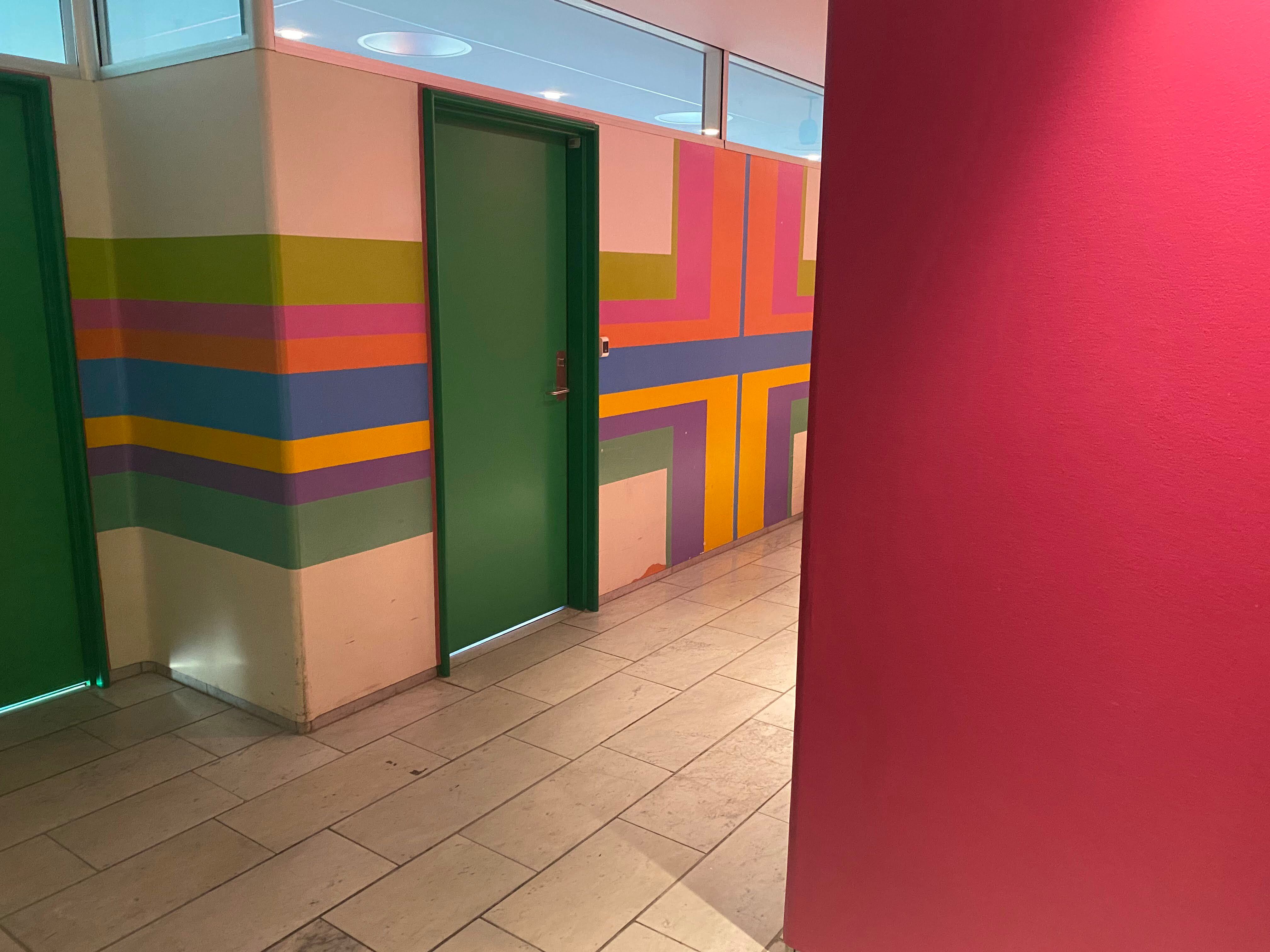
What Heals - Besides Art? What Helps You Recover?
So, besides being totally psyched up (in a good way!) by the colors and art at the hospital, I also began to think about other factors that I knew for sure could help me heal. You gotta do what you can do to heal, right? So I was thinking about what I knew - from studying health psychology and from research and life in general - could help and how many of those things I was lucky to have! So here they are - in random order:
Research (and my own life-experience!) shows that a great support system helps, as well as humor, a growth mindset sleep, rest, stretch, exercise, music, being in nature and mindfulness helps. And lucky me - being pretty well nurtured, versed and trained within all these areas, now that I found myself in need of all of them! Let's take a closer look at them. Who knows, maybe you can learn a thing or two - and thus be more prepared the moment illness, pain or suffering might hit you?
The Wonders of a Great Support System
It becomes very apparent when you are hospitalized, how important it is to have a good support system. I felt lucky being surrounded by a caring family and great friends, who genuinely asked me: “How are you? How can we help?” And who did not only ask, but also instinctively figured out ways of helping and cheering me up.
Having access to a great support system is a fundamental part of the healing journey. Research has shown that having a strong support system has many positive benefits, such as higher levels of well-being, better coping skills, and a longer and healthier life. Studies have also shown that social support can reduce depression and anxiety. So, if you do not have a good support system around you I would like to say the following: it’s never too late to grow and nurture it. There are a number of resources and support groups that can help you in building up a support system. As the poet John Donne once wrote: ‘’No man is an island’’ - we all need human connection, belonging, and understanding - both on the journey of healing, and on the journey of life. So, if you haven’t got a great support system around you - yet - then you need to go nurture it!
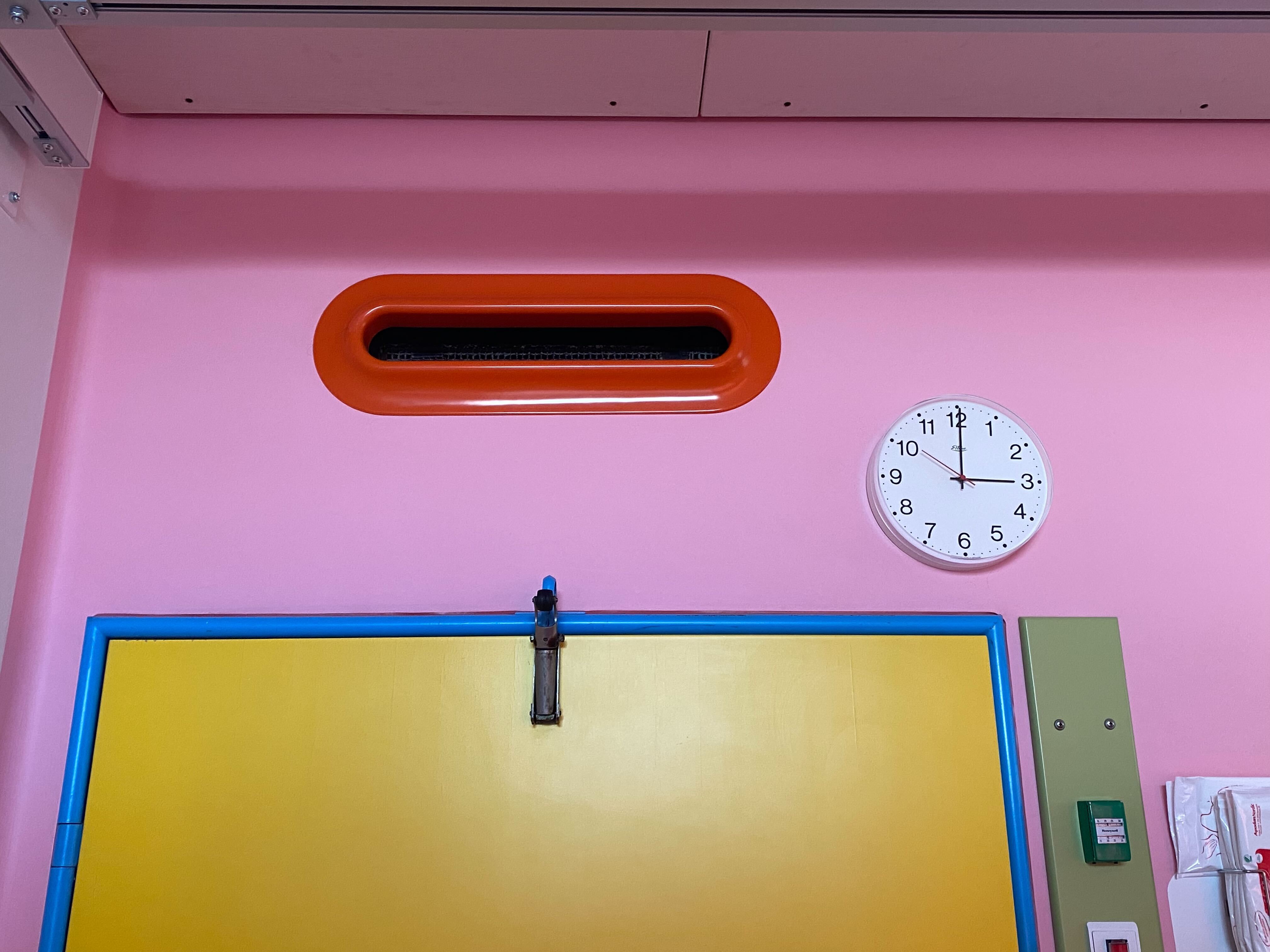
Humor - Let’s Laugh A Little
Another thing that helps us heal, is having a sense of humor. In the HBR article, “Leading with Humor” Alison Beard writes: “Laughter relieves stress and boredom, boosts engagement and well-being, and spurs not only creativity and collaboration but also analytic precision and productivity.” The importance and benefits of laughing are often overlooked. Yet we all know how GOOD laughing makes us feel. In fact, the magic of laughter is actually healing. Research shows how laughter brings physiological benefits to the body. It lessens people’s pain, so if anything, we need to be spreading more healing laughter in all of our interactions. Laughter is like a bee pollinating flowers and bringing them to life. It makes you want to live, and it reminds you of something very basic in life: Don’t take it too seriously, or you will end up dying from worry or boredom!
Therefore, during my hospital stay, I deliberately tried to laugh, look for the bright things, appreciate when people told me a joke - and joked with how old I looked when I tried to walk. “Come on - get a grip - pull yourself together - you still have two functioning arms, right?”. It did wonders for my mental health!
I know it is easier said than done to try to joke a bit about your situation, and not take life too seriously. And some might argue: “Well, aren’t you supposed to take it seriously?” Of course, but not too seriously. “Just enough” is also an appropriate saying here. Which leads me to the next thing, that is known to help in a situation like this: A Growth Mindset. aving and deliberately nurturing a Growth Mindset is also something you can set your mind up for and which might help you heal, recover, get well and live a nice(r) life!
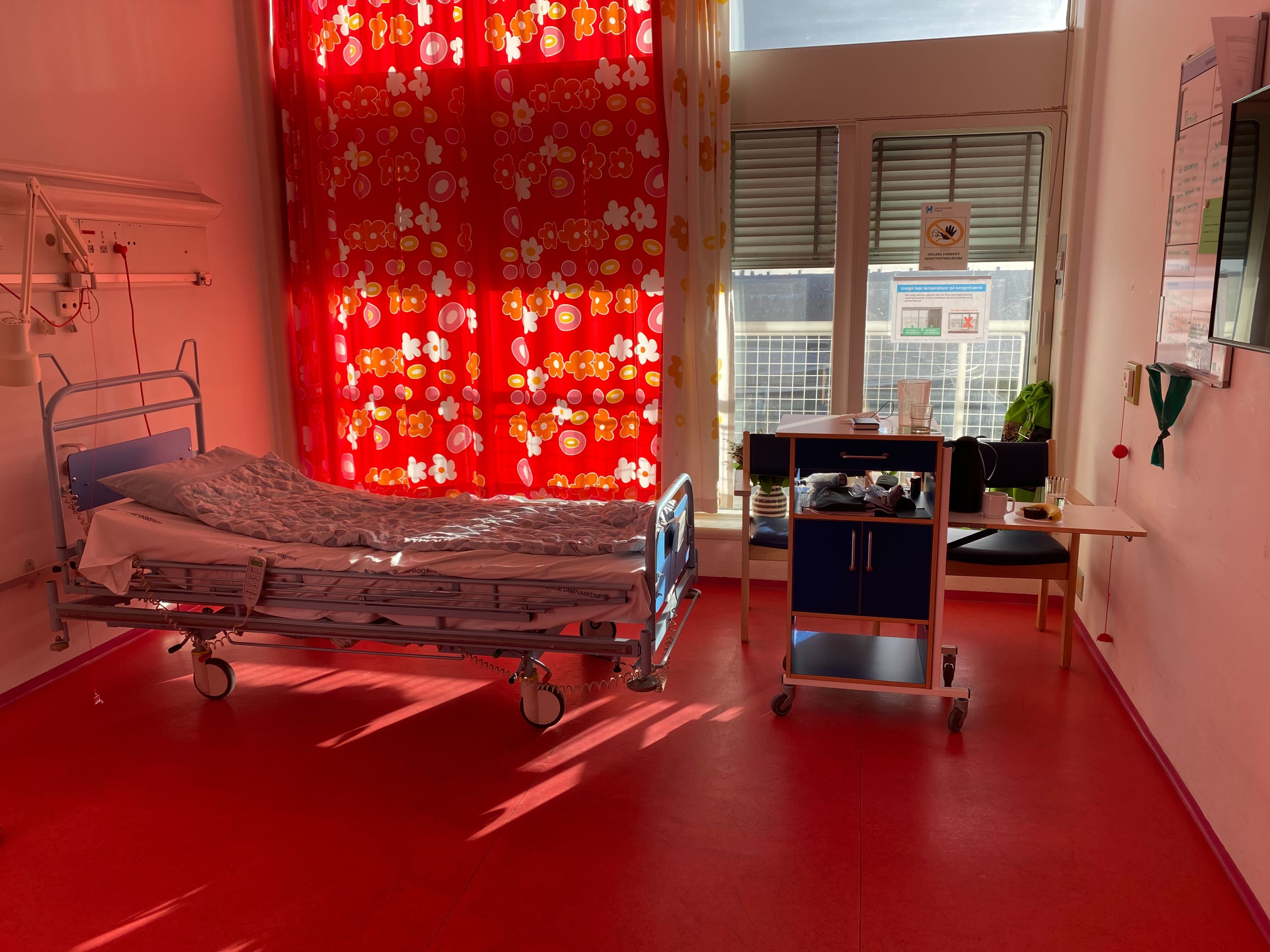
Nurturing a Growth Mindset
Lately, there has been a lot of talk about the Growth Mindset within Psychology as well as at work. The research behind the Growth Mindset started more than 30 years ago, though, when Carol Dweck and her colleagues started looking into students' attitudes about failures and setbacks. They noticed that some students found failures and setbacks inspiring in terms of “giving it another go”, while others were left devastated. After studying the behavior of thousands of children, Dr. Dweck coined the terms “Fixed Mindset” and “Growth Mindset” to describe the underlying beliefs people have about failure, setback, and learning.
The Growth Mindset can be defined as a mindset where you think:
- Let me try again!
- What is there to learn in this situation?
- Challenges help me to grow
- Feedback is constructive and I can benefit from taking it to heart
- 'I have never tried that before, so I think I should definitely be able to do that. (Uttered by Pippi Longstocking in Astrid Lindgren’s children's book about Pippi.)
On the contrary, the Fixed Mindset can be defined as a mindset where you think:
- This is hard, I will never succeed
- If I fail it means I am now good (at it)
- Challenges are no fun, I would rather avoid them
- Feedback is hurtful
- When approached with "Good morning!" Eeyore (from Winnie the Pooh) /the Fixed mindset responds, "Well, I suppose it is...for some."
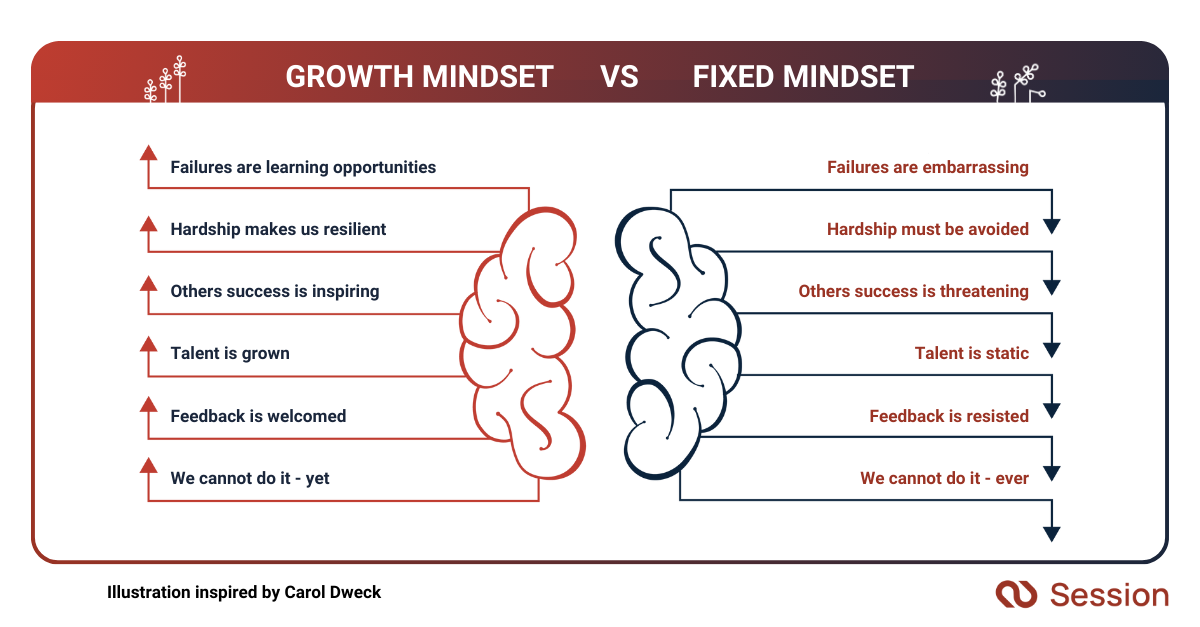
Deliberately nurturing a growth mindset and staying solutions oriented help you get through hard times! This is something I for sure experienced while being hospitalized.
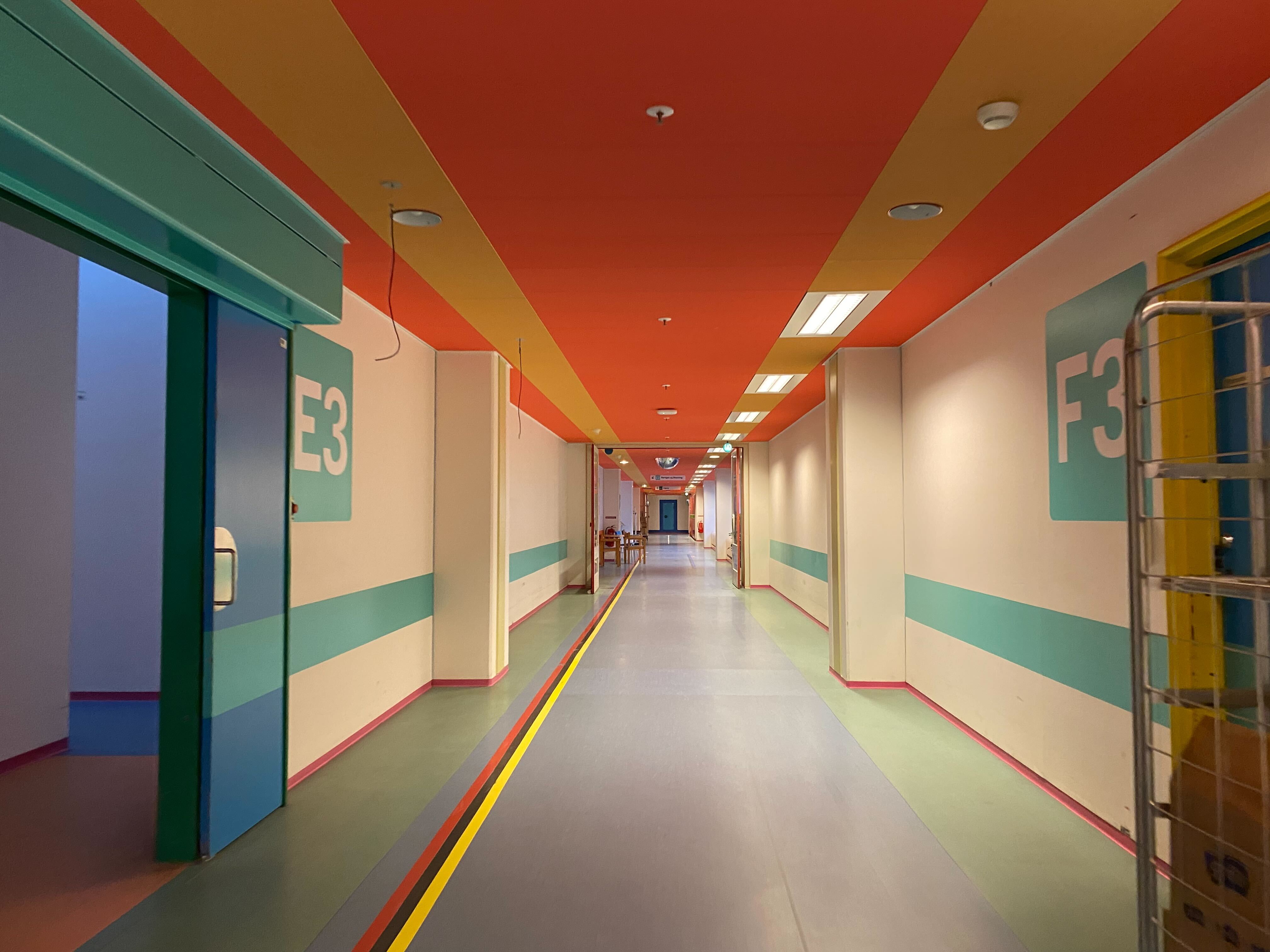
Throughout my hospitalization I found myself saying things like: ”I might not be able to walk straight, but at least I have one leg that carries me!” and “At least my heart is beating and my brain is functioning, and when I am in pain - hurray - I feel something! ”
Some people consider this naive, a bit too overly optimistic, but hey - it worked wonder!
Focusing on what works, helps. Focus on everything you HAVE and CAN do and everything that WORKS. It works wonders. As we also explored at our webinar back in September 2021 with David Cooperrider and Roberta Baskin.
Sleep, Rest, Stretch, Exercise
I cannot leave out the importance of sleeping, resting, stretching and exercising in an article on recovering from illness and finding your zest and getting your energy back. Before I studied Health Psychology, I earned a Minor Degree in Science, studying Physical Education at the University of Copenhagen. Again, I guess life prepared me for this moment of illness, giving me vital information about my body, how it functions, and the importance of exercise in general.
It counts - at work as well as in life in general - that if you get to know your body, it can help you make wise decisions, based on not only what your mind tells you, but also what your body and gut tell you! .
- because Sleep is equally important. Without sleep, it is hard to know “what is what”.
Arianna Huffington, co-founder and editor in chief of the Huffington Post, has helped shed light on the devastating effects of human beings not sleeping enough. She has started a sleep-revolution movement, casting light on the importance of sleep and rest, and how detrimental it is to think that we can just work a little more, push through, and deprive ourselves of the nurturing effects of sleep. Sleep does wonders, so does taking a break and a rest. We need to allow ourselves to sleep and rest, which many unfortunately don't do enough
Stretching and exercising also do wonders. Getting out of bed. Stretching the body. Feeling the oxygen run through our body, giving life to all the cells in the body. Exercise makes us smarter and healthier. No doubt about that!
Music
Listening to music can directly and indirectly influence how we feel, since music hits our amygdala - our center for emotion - sometimes even without us being aware of it. Do you know the feeling? How can music evoke emotions, and thus also provide solace and comfort during challenging times? It has been proven to help reduce anxiety, depression, and stress, all of which are detrimental to our healing process.
Research also suggests that listening to music can reduce the perception of pain, potentially decreasing the need for pain medication. It can act as a distraction and promote relaxation, contributing to pain and stress relief.
With this in mind, now might be the time for you to put together that favorite playlist of yours, which can help lift your mood on a rainy day, or help you relax on a day where you feel tense and in pain. Give it a try!
Being in Nature
Now, here is one of my favorite themes when it comes to the art of healing. During my hospital stay it was not possible for me to leave and hug a nearby tree - but I wish it had been possible! One of the things that I know for a fact really helps me when I need to calm down, put things into perspective or just relax and unwind, is to be in nature. Recently, new research has proven that it is not only me that feels this way, but why thousands of people are now following a new trend: Hugging trees and immersing themselves in nature!
The Japanese call it forest bathing. Forest bathing, also known as shinrin-yoku, is a practice stemming from Japan, that involves immersing oneself in the atmosphere of a forest for relaxation and wellness. It's not about hiking or exercising but rather about slowing down and mindfully connecting with nature through your senses.
Mindfulness
Last, but not least, I want to mention how Mindfulness helped me cope with my situation, not only during this hospital stay, which sparked the idea for this article in the first place, but also many other times in my life, when life was not the easiest. Mindfulness is the art of staying present in the moment - with curiosity, openness, gratitude, trust, patience and acceptance. I first learned about mindfulness in the 90s, when I studied Health Psychology in the US. Jon Kabatt Zin is named “the father of modern mindfulness” and his introduction to mindfulness has done wonders for not only me, but thousands of others around the globe.
Therefore, let me end this article by telling you a bit about what mindfulness is and can do for you in a situation like mine, where pain is sometimes there - but you need to learn to deal with it - whether this is psychological or physical pain. I will keep it short, there are plenty of other great articles “out there” digging deeper into the subject.
Mindfulness - as defined by the Magazine Mindful:
“Mindfulness is the basic human ability to be fully present, aware of where we are and what we’re doing, and not overly reactive or overwhelmed by what’s going on around us”
In order to do this, you need to cultivate a certain outlook at life, or a certain way of judging - or NOT judging - what is going on around you, between you and others and inside of you. The non-judgemental part is so important. Being curious. The perspective you deliberately take when you practice mindfulness includes the following:
- Curiosity
- Openness
- Gratitude
- Trust
- Patience
- Acceptance
During my hospital stay, what I did was , to try to look at my situation, my pain and the sensory experiences from this perspective. Let me give you a few examples
Curiosity: Wow, that’s interesting! One leg is burning hot, the other is ice cold. I have never experienced that before in my life - I wonder how many have?
Openness: One of my legs is hurting. Where does the pain start, where does it end?
Gratitude: I FEEL something - it would be worse, if I didn’t!
Trust: The pain is telling me something. I am confused about the signals, but will eventually learn to “read” them in the right way. I can trust that my body will help me recover, if I allow it to - give it time - and, thus, practice:
Patience: Yes, patience… just wait… give it time… (this was and is hard for me, I admit it!)
Acceptance: Everything is temporary. Also this will pass. This is how it is right now. Not how it was yesterday, not how it will be tomorrow, Life is like a box of chocolate: You never know what you are gonna get, (so better enjoy what you get - and hey - if it is all chocolate - what’s not to like?!)
Mindfulness is a lot more than “just” applying a certain set of attitudes to your life situation, though. It is about caring, it is about breathing. It is about living your life fully awake to the present moment. Breathing in - I follow my breath and feel how the oxygen does its wonders to my body. Breathing out, I let go. And then again. Repeat. Until you master the art of being, at a new level.

Conclusion
Life is short. Enjoy it. The Dalai Lama once said “Pain is inevitable. Suffering is optional.’’ - all humans inevitably experience pain and hardship, that’s just the deal with living. However, if we can nurture our strength and resilience we can turn this pain into a learning experience - rather than suffering endlessly. If you are going through pain in your life, I encourage you to deliberately focus on the beauty around you, nurture a growth mindset, develop a support system, and maintain a sense of curiosity and humor. Remember to sleep and exercise, stretch and rest. Get out in nature. Listen to music that does you well. And try out mindfulness!
If you are not going through pain right now, start to build the foundations that can help you cope in the future should you happen to experience pain and difficult life situations. No matter where you are in your life, I hope these words have provided you with some useful advice. And hey - if you want help on your journey - get a coach!

